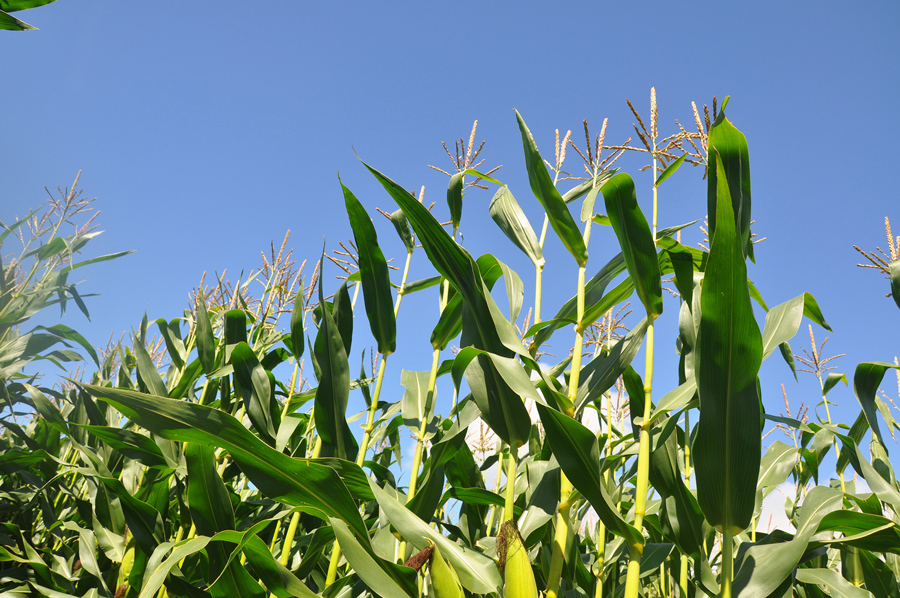Harvest is one-shot opportunity to lock ‘goodness’ into maize silage
27th August 2019
There is enough energy in a hectare of fresh forage maize to support about 30,000 litres of milk production in dairy cows, once animal maintenance needs are met.
There is enough energy in a hectare of fresh forage maize to support about 30,000 litres of milk production in dairy cows, once animal maintenance needs are met.
But decisions at harvest can have a huge impact on how much of this energy is actually preserved in the silage. Also, unlike grass, which is harvested multiple times a season, there’s only one chance to get maize harvest and preservation right.
Those are the messages from Volac silage expert, Peter Smith, who says it is easy to underestimate how much milk can come from maize, but it’s also easy to underestimate the losses in its feed value that can occur during storage.
“Typical losses are around 15% of the maize dry matter ensiled,” explains Mr Smith, “but they can be much higher. The most obvious loss occurs when maize silage heats up, caused by yeasts and moulds ‘feeding on’ the silage in the presence of air. But losses from poor fermentation can typically be 8%, or potentially much more.
“The starting point to good preservation is to harvest maize at the correct time and in the correct way. You should harvest when the whole plant is at 30-33% dry matter and chop it to 1.5 – 2cm lengths. Also, don’t cut the crop too low.”
By cutting at the correct stage and using the correct chop length and cutting height, Mr Smith says it not only optimises nutrient content but also sets the crop up for a better preservation. High dry matters and long chop lengths make it more difficult to squeeze the air out of the crop in the clamp, he says, which encourages heating from the growth of yeasts and moulds.
“Over recent seasons, many farmers have reported that maize silage dry matters have been high. This suggests crops have been harvested a bit late. To avoid this, keep regular checks on plant maturity before the expected harvest date, and keep your contactor regularly informed.
“A lot of attention is often paid to other stages of growing maize crops, such as ploughing and sowing date. But the same level of control may not always be applied to the preservation.
“This extends to using additives: it is easy to omit one, but that leaves the preservation much more open to chance. Look for a dual-purpose additive: one that not only controls heating but also improves fermentation.”
As an example, Mr Smith says Ecocool applies two strains of beneficial bacteria – one shown to produce a rapid fermentation, and one that inhibits yeasts and moulds. He says it has been shown to reduce dry matter losses and also significantly delay heating of maize silage, and grass too.

Volac silage expert, Peter Smith.
“With maize silage dry matter losses normally being around 15%, covering both potential problems like this is important,” he explains. “There is an argument that greener maize needs more help with fermentation, while in more mature maize, yeast and mould levels increase.
“Maize preservation can also often go wrong during clamp filling, because there’s pressure to complete the job quickly. Take time to consolidate the crop thoroughly and seal it fully – not only to starve spoilage organisms of oxygen but also to aid the fermentation.
“To squeeze air out, you need to consolidate to a density of 700 kg of fresh maize per cubic metre. To achieve this, fill in horizontal layers a maximum of 15 cm deep. A second machine consolidating the clamp is vital to achieve this consistently.
“After all this good work of excluding air from the clamp, don’t let it back in again. As well as a top sheet to cover the whole clamp, good quality side sheets all the way to the floor and coming up to give a 1-2 metre overlap on top of a cling film-type sheet on top of the silage are essential for success.
“There is no single step to good maize preservation,” says Mr Smith. “It needs a multi-step approach.”

